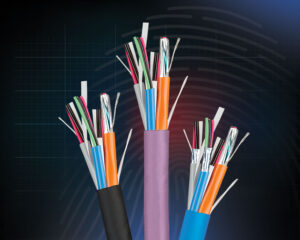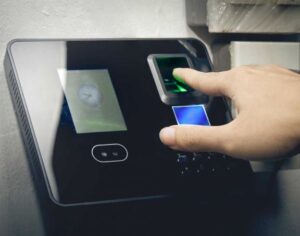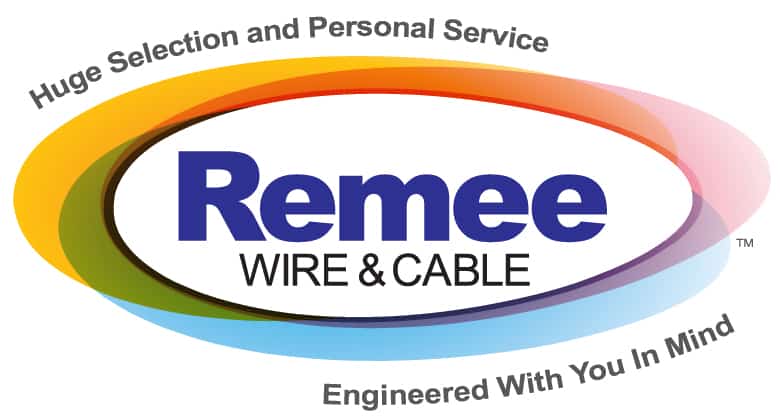Security is paramount in today’s buildings, and advancements in access control technology are continually evolving to meet growing demands. The transition to OSDP (Open Supervised Device Protocol) cables for access control systems has changed the game for building security, offering enhanced security, faster communication, and greater reliability compared to traditional Wiegand protocols.
Let us understand how OSDP cables are shaping the future of access control, the benefits they bring over conventional security cables, and trends to watch in building security. By understanding these insights, businesses can make informed decisions about upgrading their access control systems and staying on top of the latest security trends.
Why OSDP Cables Are the Future of Access Control
As security threats become more sophisticated, so must the systems that protect against them. One of the most significant shifts in access control technology has been the adoption of OSDP cables.
But what makes it stand out? Traditional access control systems rely on Wiegand cables, which have limited data transmission capabilities and are more susceptible to security breaches. These cables, on the other hand, support bidirectional communication between access control panels and readers, improving both the security and functionality of these systems.
Key Benefits of Using OSDP Cables in Building Security
- Enhanced Security: These cables are encrypted, making it difficult for hackers to intercept and exploit data, unlike Wiegand cables.
- Greater Functionality: It supports advanced features, such as diagnostics and two-way communication, providing real-time monitoring and troubleshooting.
- Future-Proof Compatibility: As OSDP becomes the industry standard, systems with these cables ensure future compatibility, making them a long-term investment.

OSDP Cable vs. Wiegand: A New Standard for Access Control
The OSDP cable technology surpasses the Wiegand reader standard, which has been used in building security systems for decades. While Wiegand technology was once revolutionary, its lack of encryption and limited data transmission capabilities has led security experts to seek more secure, robust options. Enter OSDP.
Comparing OSDP and Wiegand Readers:
| Features | OSDP Cable & OSDP Reader | Wiegand Reader |
| Data Security | Encrypted Communication | No encryption |
| Data Transmission | Two-way communication | One-way communication |
| Diagnostic Capabilities | Advanced, real-time diagnostics | Limited |
| Scalability | Easily adaptable to new technologies | Limited compatibility |
By switching to OSDP cables, facilities managers and security professionals can mitigate security risks associated with Wiegand readers while enhancing system functionality and diagnostics.
How OSDP Cable Improves Access Control Systems
1. Stronger Data Security
Security breaches in access control systems can compromise building safety, risking both personal and sensitive information. It also offers encrypted communication, meaning data transmitted from the access control cable to the control panel is secure from interception and hacking attempts. This encryption creates an additional layer of defense, helping to prevent unauthorized access.
2. Faster Data Transmission
Unlike traditional access control cables, which rely on one-way communication, OSDP cables allow two-way communication, providing faster and more reliable data transmission. This bidirectional flow enhances system responsiveness, making access events smoother and faster. For instance, when using an OSDP reader, the system can immediately verify user credentials, reducing wait times at access points.
3. Real-Time Diagnostics and Monitoring
One of the biggest advantages of this cable is the ability to perform real-time diagnostics. For facilities with extensive access control needs, such as large office buildings or government facilities, being able to detect and address issues quickly is crucial. With these cables, facilities managers receive real-time status updates from access control points, allowing them to troubleshoot any malfunctions immediately.
4. Reduced Installation and Maintenance Costs
The improved communication and diagnostic capabilities of OSDP can lead to significant savings in installation and maintenance. Because it supports more comprehensive data, technicians can diagnose problems remotely, reducing the need for costly on-site maintenance visits. Additionally, OSDP is a universal standard, making it compatible with a wider range of devices and systems, which can further simplify installation.
Trends in Building Security
As technology and security threats evolve, certain trends are driving change in building security. OSDP cables are a central part of these trends due to their advanced features and future compatibility.
Trend 1: Demand for Smarter, Connected Buildings
The shift toward smart buildings—those that incorporate IoT devices, automation, and real-time monitoring—has created a demand for access control cables that can handle more data and enable more intelligent operations. OSDP cables, with their bidirectional communication and real-time diagnostics, are ideal for such environments.
Trend 2: Compliance with Higher Security Standards
Industries like healthcare, finance, and government have increasingly stringent security regulations. OSDP cables meet these high standards by offering encrypted, secure data transmission that meets modern compliance requirements. As more sectors adopt it, we can expect to see this standard implemented across various types of facilities.
Trend 3: Sustainability and Cost Efficiency
Companies are also looking for ways to reduce energy consumption and operational costs. By providing real-time data and diagnostics, it enables efficient monitoring, maintenance, and repair processes. This not only reduces costs but also minimizes downtime, ensuring that access control systems operate efficiently with minimal environmental impact.
Choosing the Right OSDP Cables
This can be challenging. Here’s what to consider when making your choice:
1. Compatibility
Ensure that the cable is compatible with the existing access control system. Some older systems or adapters may require upgrades.
2. Durability
Look for security cables that can withstand environmental stress, such as temperature changes and moisture. This is especially important for cables installed in outdoor or exposed environments.
3. Data Security Capabilities
Check for encryption capabilities to protect your data transmission. Some OSDPs may come with enhanced security features, offering added peace of mind.
4. Signal Quality
Higher-quality materials and construction ensure that OSDP cables maintain signal integrity over long distances, which is crucial in large buildings or facilities with multiple access points.

How to Make the Transition to OSDP Cables Smoothly
Switching from traditional access control cables to OSDP cables may seem daunting, but with the right preparation, the process can be smooth and cost-effective.
Steps for a Successful Transition:
- Assess Current Infrastructure: Identify which parts of your current system are compatible with OSDP technology and which need upgrading.
- Plan for Incremental Upgrades: If budget constraints exist, start by upgrading high-traffic access points first to see immediate improvements.
- Train Security Staff: Familiarize your security team with the new technology, ensuring they understand the features and capabilities of OSDP.
- Consult with Experts: Work with a qualified installer or cable provider like Remee Wire & Cable to ensure you’re getting the best advice on OSDP cable compatibility and installation.
For high-quality OSDP cables and security cables, visit Remee Wire & Cable.
Remee provides Access Control Cables for Wiegand systems, OSDP systems, OSDP / RS485 combo, and a cable designed for use with both Wiegand and OSDP systems.
In order to build security, OSDP cables stand out as a powerful solution for enhancing access control. With stronger data encryption, bidirectional communication, and real-time diagnostic capabilities, it addresses many of the challenges associated with traditional security cables. As more buildings and facilities move toward smarter, connected systems, the adoption of OSDP technology will only continue to grow.
Don’t let outdated cables compromise your building’s security. Invest in OSDP cables today to keep your access control system secure, efficient, and ready for the future. Visit Remee Wire & Cable to learn more about your options.
